Crusty Artisan Bread
This post may contain affiliate links. Read my full disclosure policy.
This crusty bread recipe is astonishingly easy—no kneading required—and makes three beautiful loaves, which you can bake as needed.
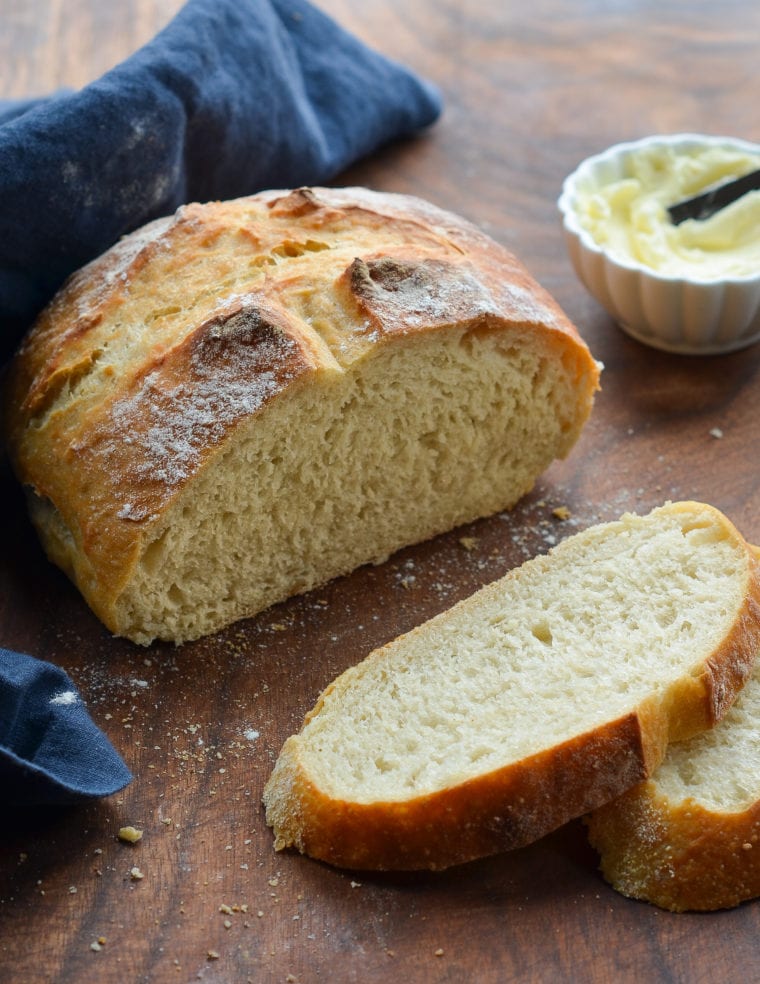
This homemade artisan bread recipe is astonishingly easy, and it makes enough for three delicious loaves, which you can bake as needed. What’s more, the dough takes just five minutes to make, does not require kneading or any special equipment, and can rest in the fridge for up to two weeks (the flavor becomes more complex the longer it sits). The recipe is modestly adapted from one of my favorite baking books, Artisan Bread in 5 Minutes A Day by Jeff Hertzberg M.D. and Zoë François.
Table of Contents
What You’ll Need To Make Crusty Artisan Bread
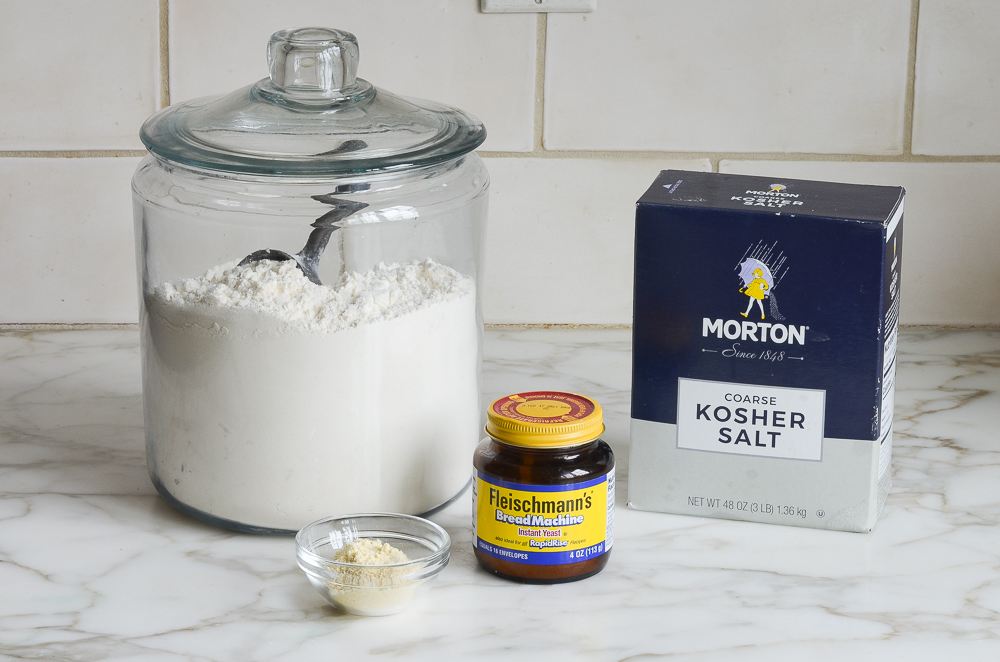
This recipe has just four ingredients: all-purpose flour, instant yeast, kosher salt, and water. (The cornmeal is for dusting the pan.) As you can see, I use instant (or rapid-rise) yeast. Active dry yeast may be used instead of instant yeast, however, the dough will take longer to rise. To give active dry yeast a boost, you can dissolve it in the lukewarm water and let it sit until frothy, about 10 minutes. After that, add it to the flour and proceed with the recipe.
How To Make Crusty Artisan Bread
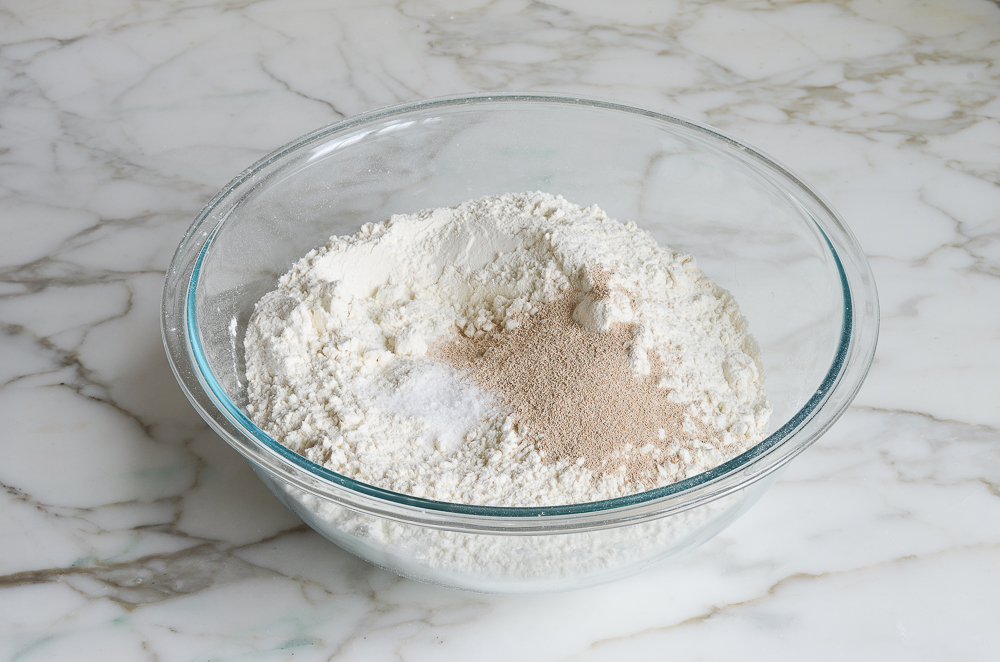
In a very large (6-quart) bowl, combine the flour, salt, and yeast. Mix to combine.
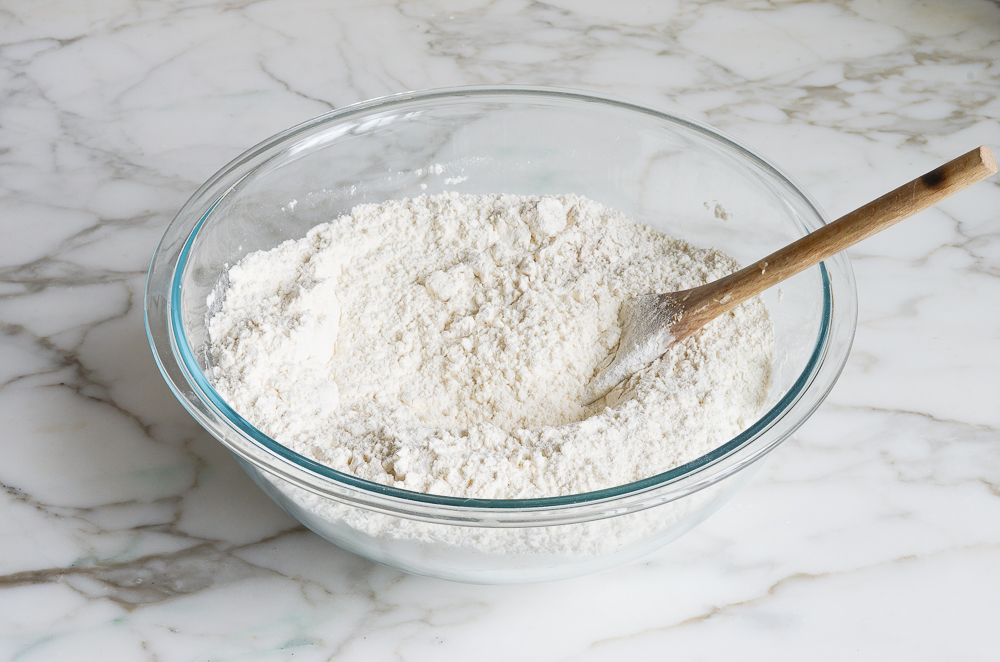
Add 3 cups of lukewarm water (no need to be exact but lukewarm is about 100°F).
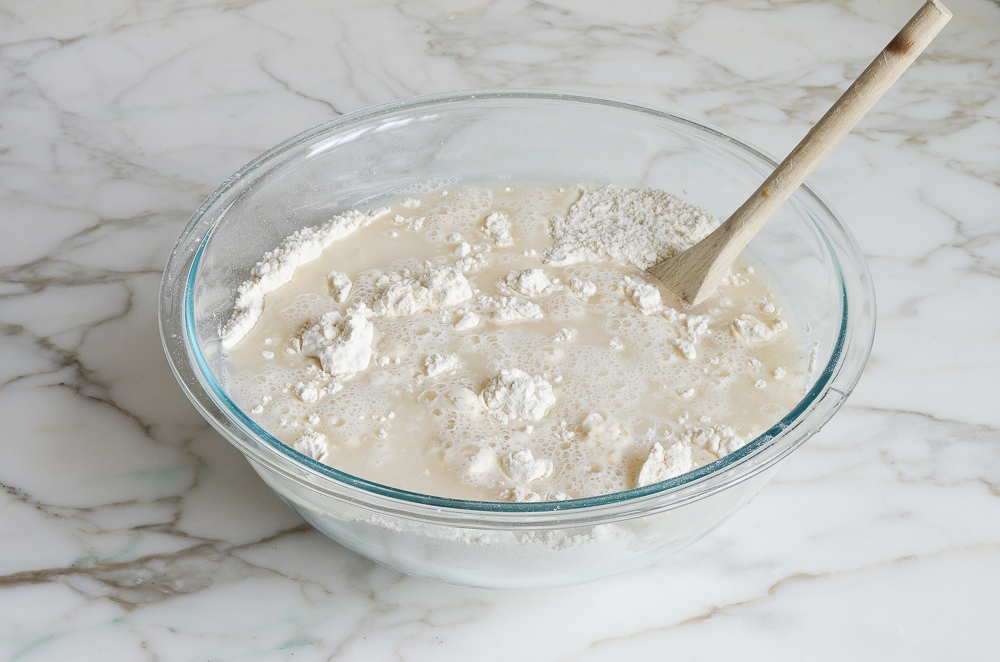
Stir with a wooden spoon until the mixture is uniformly moist, without any patches of flour.
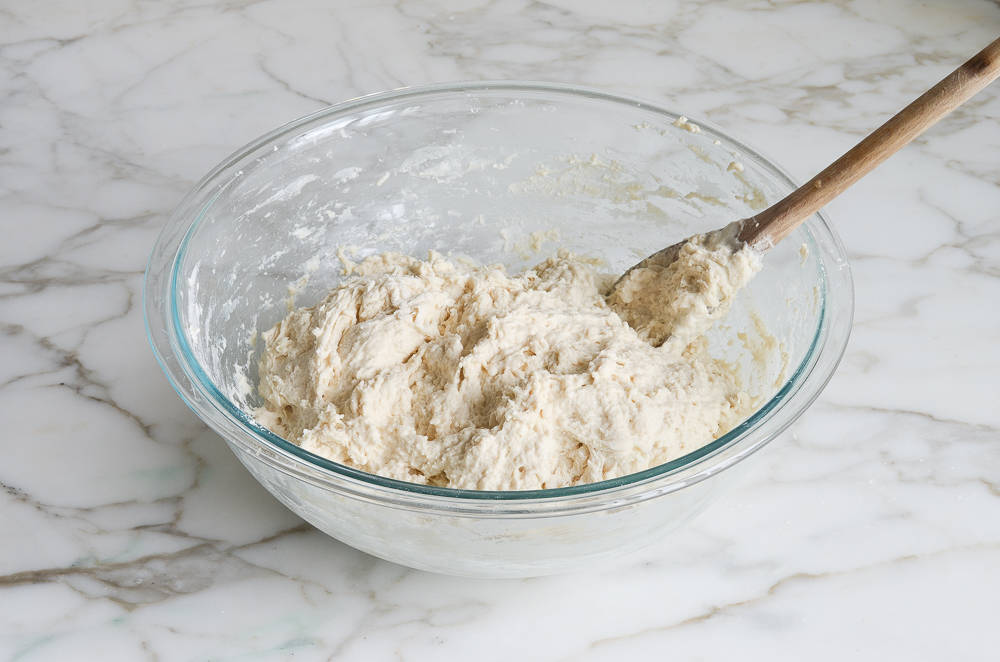
The dough should be sticky and conform to the shape of the bowl. If your dough is too dry, add a few tablespoons more warm water. If it’s too wet, add a few tablespoons of flour. Cover the bowl loosely with plastic wrap and let it sit on the counter in a warm spot for 2 hours. As you can see below, it will rise a lot!
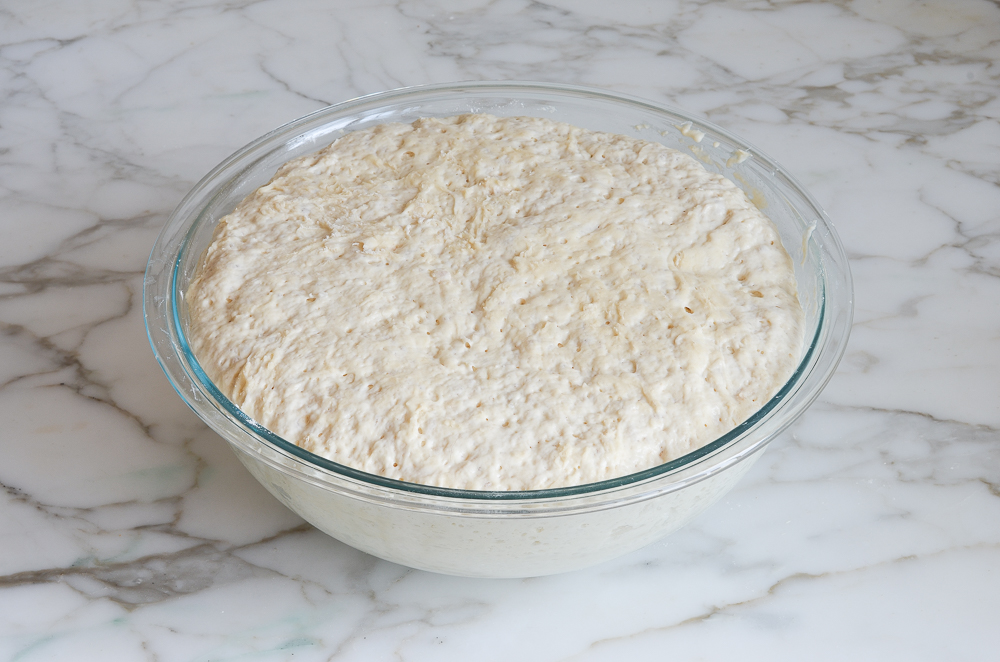
When you’re ready to bake a loaf, pull out one-third of the dough.
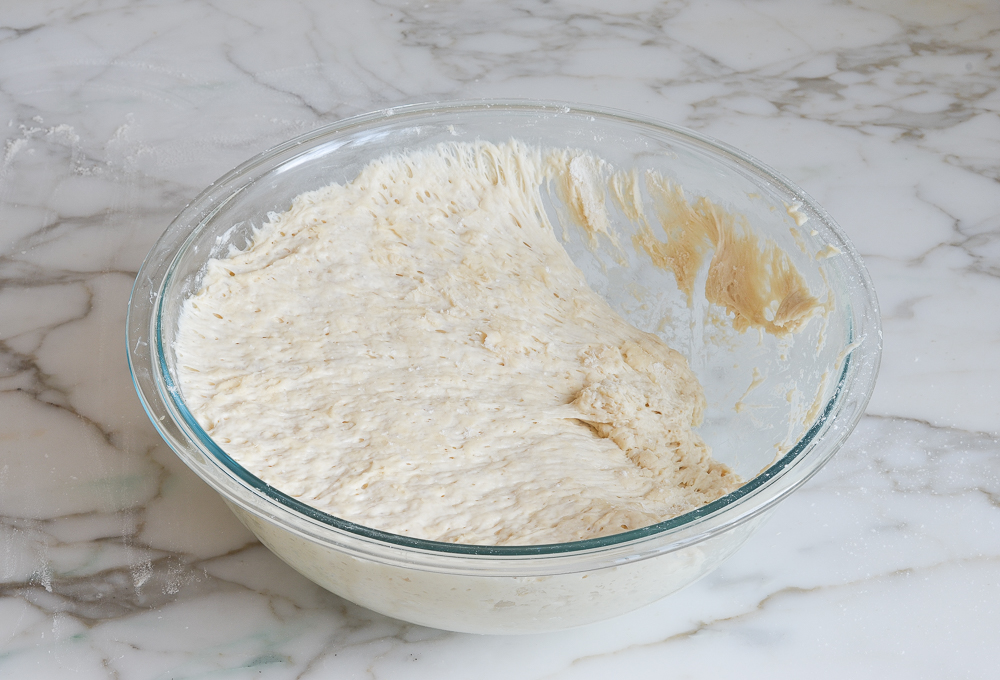
Coat the outside lightly with flour (you don’t want to incorporate more flour into the dough, you just want to be able to handle it). Gently work the dough into a smooth ball, stretching the surface and tucking the ends underneath.
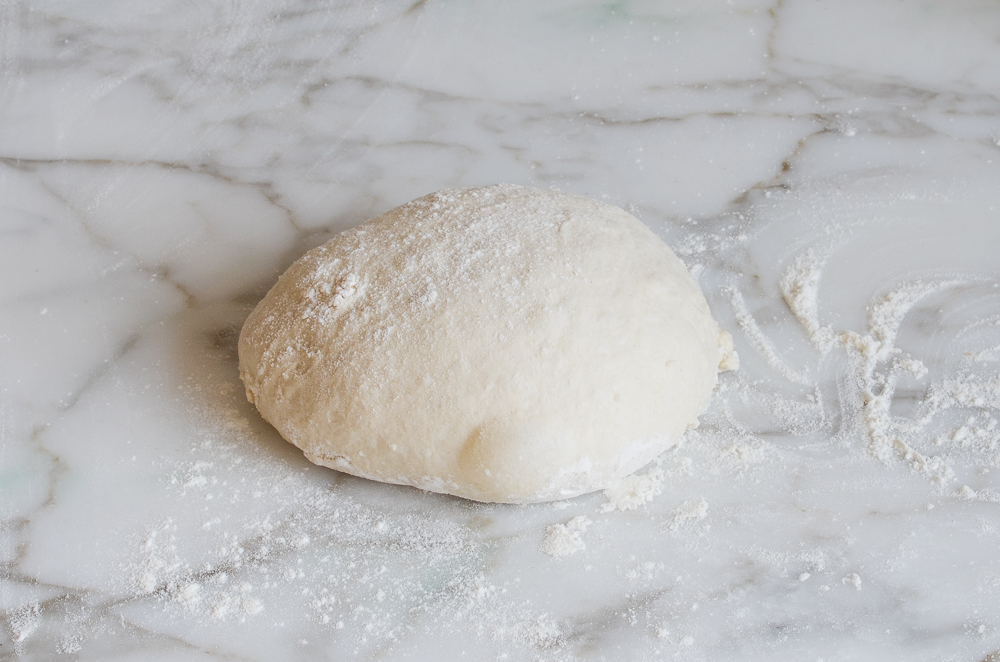
Put the dough ball onto a cornmeal-dusted baking sheet and let rest at room temperature, uncovered, for about 40 minutes. (If the dough has been refrigerated, allow it to rise for 60 minutes, or up to 90 minutes if you want a more open and airy crumb structure.) The dough will rise a bit. It may also spread/flatten a bit; that’s okay.
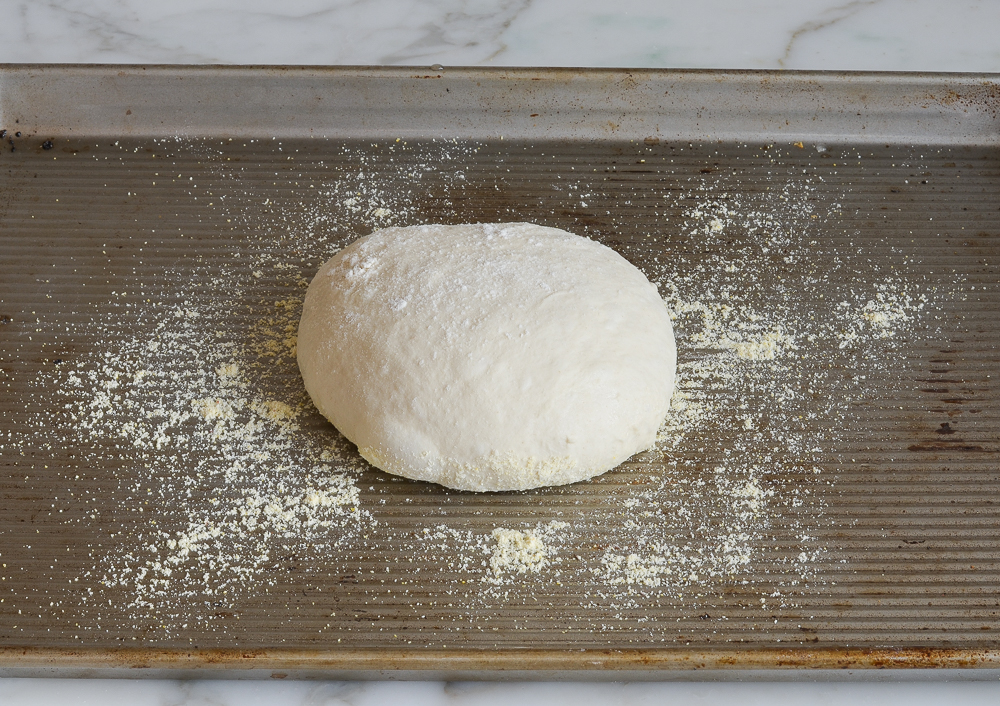
The dough will rise a bit.
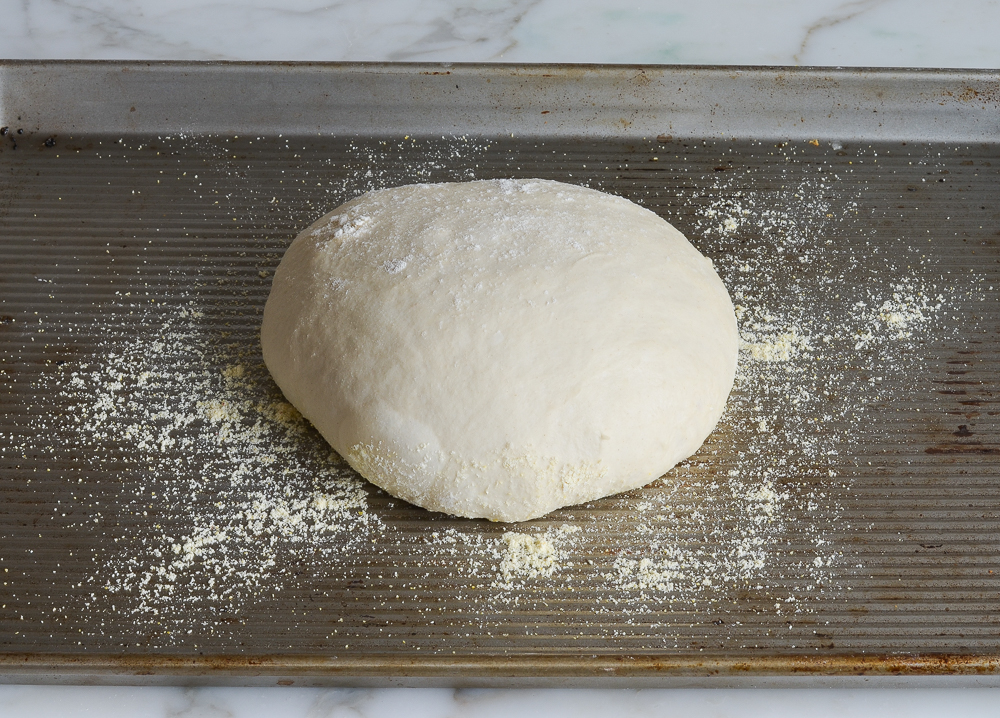
Generously dust the dough with flour. Using a sharp knife, make a few 1/2-inch-deep slashes in the dough — a scallop, cross, or tic tac toe pattern all look nice.
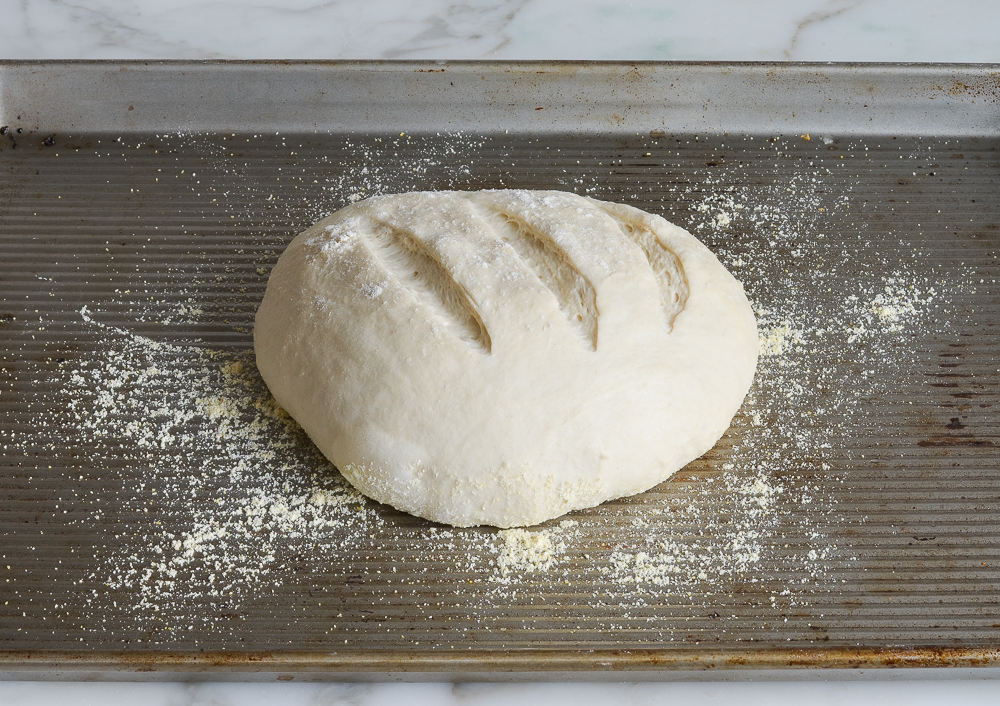
Set a metal pan on the bottom rack of a preheated 450°F-oven. Slide the baking sheet with the dough into the oven, and carefully fill the metal cake pan with one cup of hot tap water. This creates steam in the oven. (Try to do this quickly so as not to let heat out of the oven.) Bake until the loaf is golden brown, about 30 minutes. Cool completely on a wire rack.
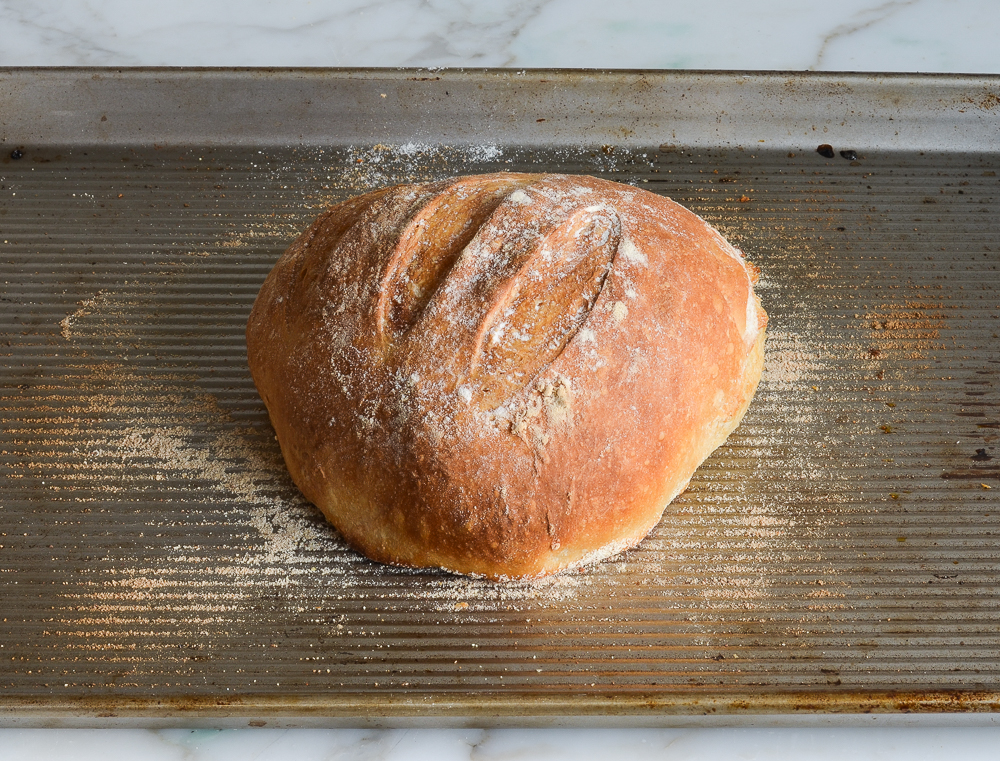
This bread is best enjoyed fresh on the day it is made. Once sliced, place the loaf cut-side down on a cutting board or plate and leave it uncovered.
How To Freeze
The dough can be portioned into thirds and frozen in airtight plastic containers for up to 1 month. Defrost the dough in the refrigerator overnight, then shape, rest and bake as usual. The baked loaves can also be frozen whole or sliced. Wrap in a zip-top freezer bag and freeze for up to 1 month. To thaw, take the bread out of the freezer and let it come to room temperature, about 3 hours. Reheat in a 350°F oven until warmed through, about 10 minutes.
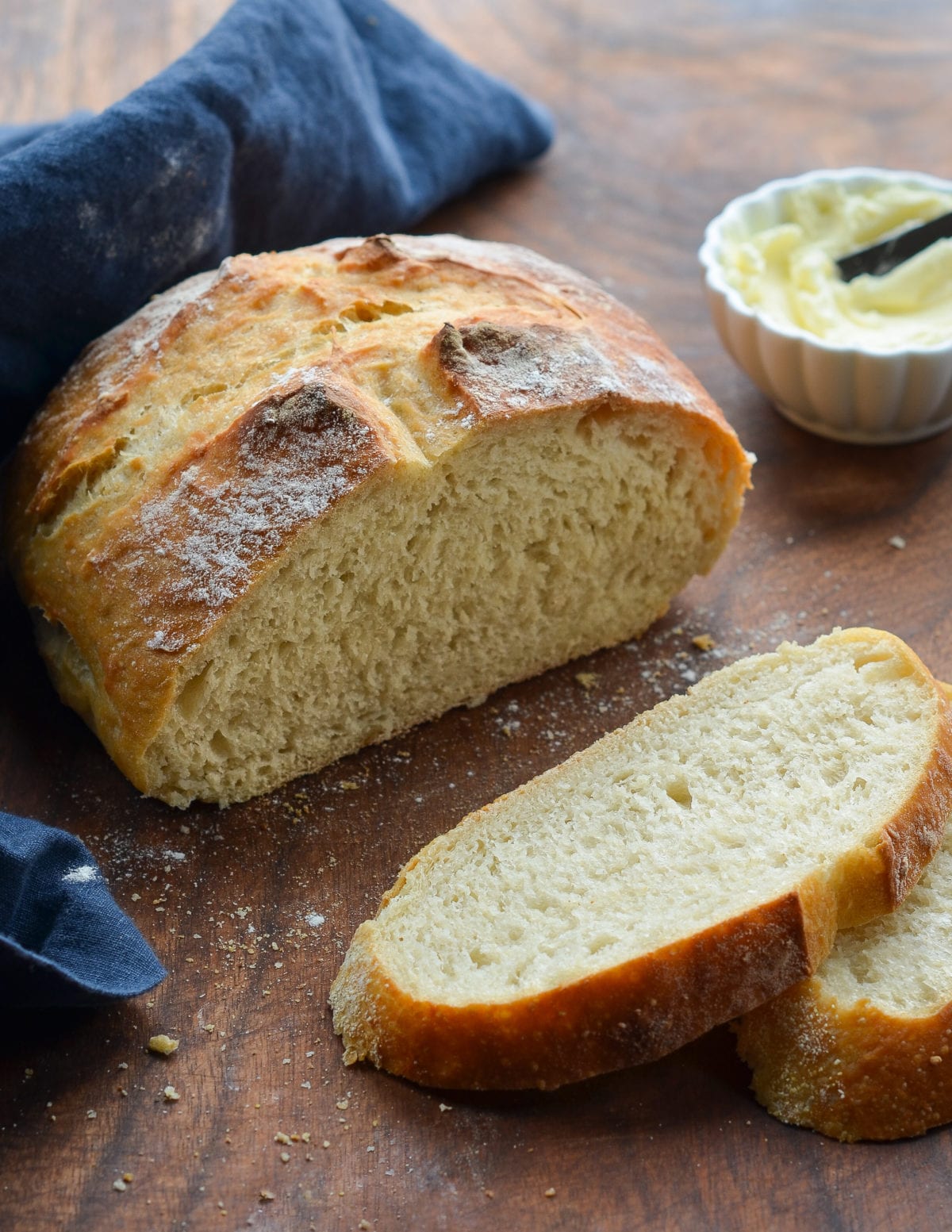
You May Also Like
Crusty Artisan Bread
This crusty bread recipe is astonishingly easy—no kneading required—and makes three beautiful loaves, which you can bake as needed.
Ingredients
- 6½ cups all-purpose flour, spooned into measuring cup and leveled-off (preferably King Arthur; see note)
- 4 teaspoons kosher salt
- 1½ tablespoons instant/rapid-rise yeast (see note)
- 3 cups lukewarm water (no need to be exact but lukewarm is about 100°F)
- Cornmeal, for dusting the pan
Instructions
- In a very large (6-quart) bowl, whisk together the flour, salt, and yeast. Add the water and stir with a wooden spoon until the mixture is uniformly moist, without any patches of flour. The dough should be sticky and conform to the shape of the bowl. If your dough is too dry, add a few tablespoons more warm water. If it's too wet, add a few tablespoons of flour. (See the step-by-step photos for guidance on what the dough should look like.) Cover the bowl loosely with plastic wrap and let it sit on the counter in a warm spot for 2 hours. If you plan to bake a loaf immediately, proceed to the next step. Otherwise, place the bowl of dough in the refrigerator to be used over the next 14 days. (Once refrigerated, the dough will shrink back a bit; that's okay. Do not punch down the dough at any point, and keep it loosely covered with plastic wrap.)
- Dust a sturdy baking sheet with cornmeal.
- Dust the surface of the dough and your hands lightly with flour. Pull out one-third of the dough and coat the outside lightly with flour (you don't want to incorporate more flour into the dough, you just want to be able to handle it). Gently work the dough into a smooth ball, stretching the surface and tucking the ends underneath, adding more flour as needed so it doesn't stick to your hands. (Don't overwork the dough; this process should only take about 30 seconds.) Put the dough ball onto the prepared baking sheet and let it rest at room temperature, uncovered, for about 40 minutes. (If the dough has been refrigerated, allow it to rise for 60 minutes, or up to 90 minutes if you want a more open and airy crumb structure.) The dough will rise a bit. It may also spread/flatten a bit; that's okay.
- Preheat the oven to 450°F. Set one rack in the lowest position of the oven and one rack in the middle position. Place a metal pan (any metal cake pan or broiler pan will work; just don't use glass) on the bottom rack. (You will fill this with water later to create steam in the oven).
- Generously dust the dough with flour. Using a sharp knife, make a few ½-inch-deep slashes in the dough -- a scallop, cross, or tic tac toe pattern all look nice.
- Slide the baking sheet with the dough into the oven, and carefully fill the metal cake pan with one cup of hot tap water. (Try to do this quickly so as not to let heat out of the oven.) Bake until the loaf is golden brown, about 30 minutes. Cool completely on a wire rack.
- This bread is best enjoyed fresh on the day it is made. Once sliced, place the loaf cut-side down on a cutting board or plate and leave it uncovered. (If it lasts beyond a day, I suggest slicing and freezing.)
- Freezer-Friendly Instructions The dough can be portioned into thirds and frozen in airtight plastic containers for up to 1 month. Defrost the dough in the refrigerator overnight, then shape, rest and bake as usual. The baked loaves can also be frozen whole or sliced: Wrap in a zip-top freezer bag and freeze for up to 1 month. (If you plan to use slices one at a time, place pieces of parchment between them so they don't stick.) To thaw, take the bread out of the freezer and let it come to room temperature on the countertop. Reheat in a 350°F oven until warmed through, about 10 minutes.
- Note: Active dry yeast may be used instead of instant/rapid-rise yeast, however, the dough will take longer to rise. To give active dry yeast a boost, you can dissolve it in the lukewarm water and let it sit until frothy, about 10 minutes. After that, add it to the flour and salt, and proceed with the recipe.
- Note: I use King Arthur flour, which is higher in protein than some other all-purpose flours. If using a flour with a lower protein content, such as Gold Medal, you will likely need to add a few more tablespoons of flour.
Nutrition Information
Powered by ![]()
- Serving size: 1 slice
- Calories: 100
- Fat: 0 g
- Saturated fat: 0 g
- Carbohydrates: 21 g
- Sugar: 0 g
- Fiber: 1 g
- Protein: 3 g
- Sodium: 64 mg
- Cholesterol: 0 mg
This website is written and produced for informational purposes only. I am not a certified nutritionist and the nutritional data on this site has not been evaluated or approved by a nutritionist or the Food and Drug Administration. Nutritional information is offered as a courtesy and should not be construed as a guarantee. The data is calculated through an online nutritional calculator, Edamam.com. Although I do my best to provide accurate nutritional information, these figures should be considered estimates only. Varying factors such as product types or brands purchased, natural fluctuations in fresh produce, and the way ingredients are processed change the effective nutritional information in any given recipe. Furthermore, different online calculators provide different results depending on their own nutrition fact sources and algorithms. To obtain the most accurate nutritional information in a given recipe, you should calculate the nutritional information with the actual ingredients used in your recipe, using your preferred nutrition calculator.

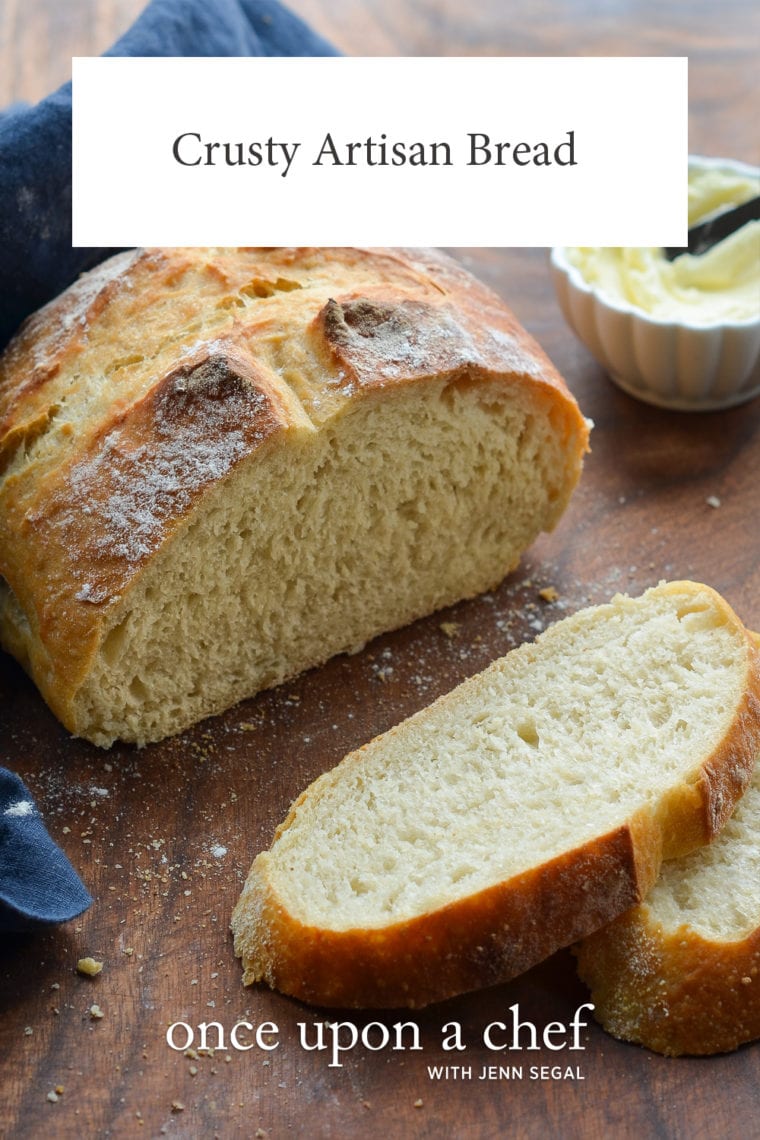
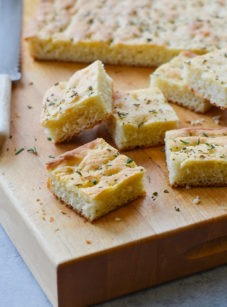
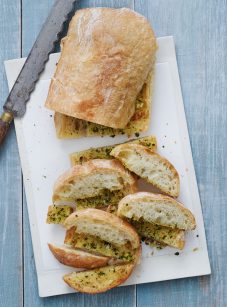
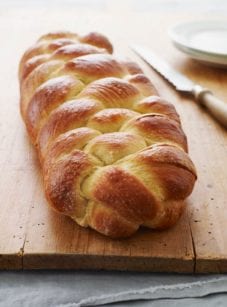
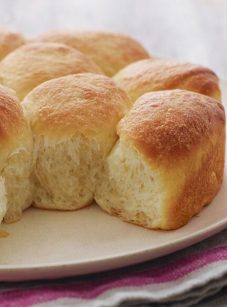
Hi ,
If no cornmeal around . Is there any other substitute ?
Thanks,
Winnie
Hi Winjie, You can bake the bread on parchment paper (keep in mind the paper will brown from the high heat).
I have taken to baking bread again. I am still a novice. I went by your instructions to the letter. However when it came time 3 hrs to roll the dough out of the dish it was tremendously wet and sticky. I tried to do the fold over knead but the dough was sooo sticky I had to add flower. I know that is the wrong thong to do but I had no choice. It never got to a smooth ball. I put it in the dutch oven still very wet and sticky. Needless to say the loaf looked pretty but was very heavy probably to my own doing trying to wrestle with the sticky dough.
Jenn, I bought a pack of fresh east and would like to make your cinnamon swirl bread from your book. How do I start baking with fresh/wet east?
Thank you.that helps!
Hello Jen!
Thank you for your great recipes!
I made this bread a few months back and it had the lovely crunchy crust but the last couple of times I’ve made it, the outside turns soft and I don’t think I did anything differently. What do you think is causing it to soften and what can I do to keep the outside crust hard and crunchy?
Hi Victoria, When does it soften? Is it after you remove it from the oven? How have you been storing it?
Hi Jen! It’s after I pull it from the oven. Last nights bread was baked just before dinner and by the time I served it (maybe 15-20 minutes) the crust was no longer hard. It was when I pulled it out because I recall tapping the top and thought it was great then when it was time to slice it was soft. Not as soft as the inside of the bread but definitely not crunchy.
Hi Victoria, It sounds like it could have used a few extra minutes in the oven.
same for me – tasted great but after it sat out and cooled completely it got soft.
Why not a glass pan?
I’ve never made this in a glass pan — the baking sheet works very nicely. Hope you enjoy if you make it!
Amazing! I was surprised by how easy this was to make (but then again, I have never had one of your recipes cease to amaze). It is delicious! My son said, “this tastes like the fresh bread at our favorite restaurant.” I only baked one loaf – love that the dough can stay in the fridge for awhile – fresh bread for a few days! THANK YOU!
Thank you Jenn for this recipe! It is the 4th bread recipe I have tried and FINALLY — the crust and texture we love!
Hi! Made this today in my le Creuset dutch oven and it is great! Question, could I make one large loaf in my large 7.25 quart round dutch oven?
Hi Anne, I haven’t tried it, but I think it should fit. Please report back if you try it!
Hi Jen
Could you explain what you mean by cover loosely with plastic wrap? Do I leave gaps in the plastic covering along the edge of the bowl to let air circulate?
Thanks so much
Hi Nancy, what I mean is you can just lay a piece of plastic wrap on top of the bowl; you don’t need to form a tight seal. And it’s OK if there’s a little gap between the edge of the plastic wrap and the ball in a spot or two. Hope that clarifies!
Jenn, can I make this with white whole wheat flour? If so, any adjustments to the amount of flour or the baking time? Thanks!
Hi Elizabeth, I’ve only made this with all-purpose flour so I can’t confidently say how it will turn out with different kinds of flour. King Arthur has a variety of bread recipes that call for whole-grain flours if you want to check them out here. And if you have any interest in buying a cookbook, this recipe was adapted from cookbook authors Jeff Hertzberg M.D. and Zoë François and they also have a book that focuses on whole grain bread recipes.